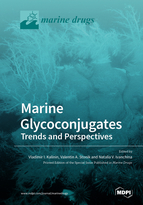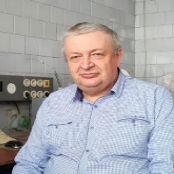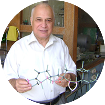Marine Glycoconjugates: Trends and Perspectives
A special issue of Marine Drugs (ISSN 1660-3397).
Deadline for manuscript submissions: closed (20 November 2019) | Viewed by 48475
Special Issue Editors
Interests: marine natural product chemistry; secondary metabolites; sea cucumber triterpene glycosides; biological activities; evolution of biosynthesis; chemotaxonomy
Special Issues, Collections and Topics in MDPI journals
Interests: marine natural product chemistry; glycosides; glycoconjugates; steroids; terpenoids; uncommon glycolipids; other marine metabolites; structures; bioactivities; chemistry; biochemistry; cell biology; pharmacology
Special Issues, Collections and Topics in MDPI journals
Interests: marine natural product chemistry; secondary metabolites; starfish polar steroids and lipids; biological activities; metabolomics; biosynthesis
Special Issues, Collections and Topics in MDPI journals
Special Issue Information
Dear Colleagues,
Glycoconjugates, biomolecules in which carbohydrate moieties are attached by a covalent bond to any aglycone, play very significant role in biological systems. Glycoproteins, peptidoglycans, lipopolyshaccharides and other biopolymer glycoconjugates are responsible for cellular interactions, including cell–cell recognition and the binding of cells to intercellular matrix, as well as they carry out other signal, antigenic and transport functions, participate in the formation of receptors and other important membrane and blood constituents. Low molecular weight glycoconjugates, such as triterpene and steroidal glycosides, glycolipids, phenolic glycosides are also well known as molecules having important internal and exterior functions for their organism-producers such as protection against predators, competition for space, food resources, etc. Diverse glycoconjugates provide very wide spectrum of biological activities including defensive, cytotoxic, antitumor, immunomodulatory, and antioxidant properties. Semi-synthetic conjugates of biologically active low molecular weight substances and carbohydrates possess better transport properties because of increased solubility. Water environment requires high solubility for signal or anti-predatory exometabolites of marine organism. All these peculiarities explain very wide diversity of glycoconjugates of marine origin. The main goal of this Special Issue “Marine Glycoconjugates: Trends and Perspectives” is to provide a convenient platform for discussion of all possible scientific aspects concerning low molecular weight and biopolymer glycoconjugates of marine origin, their isolation and chemical structures, taxonomical distribution, methods of analysis, biological activities, biosynthesis and evolution, biological roles and chemical syntheses including the obtaining of semi-synthetic derivatives of biological active natural products.
Dr. Vladimir I. Kalinin
Prof. Dr. Valentin A. Stonik
Dr. Natalia V. Ivanchina
Guest Editors
Manuscript Submission Information
Manuscripts should be submitted online at www.mdpi.com by registering and logging in to this website. Once you are registered, click here to go to the submission form. Manuscripts can be submitted until the deadline. All submissions that pass pre-check are peer-reviewed. Accepted papers will be published continuously in the journal (as soon as accepted) and will be listed together on the special issue website. Research articles, review articles as well as short communications are invited. For planned papers, a title and short abstract (about 100 words) can be sent to the Editorial Office for announcement on this website.
Submitted manuscripts should not have been published previously, nor be under consideration for publication elsewhere (except conference proceedings papers). All manuscripts are thoroughly refereed through a single-blind peer-review process. A guide for authors and other relevant information for submission of manuscripts is available on the Instructions for Authors page. Marine Drugs is an international peer-reviewed open access monthly journal published by MDPI.
Please visit the Instructions for Authors page before submitting a manuscript. The Article Processing Charge (APC) for publication in this open access journal is 2900 CHF (Swiss Francs). Submitted papers should be well formatted and use good English. Authors may use MDPI's English editing service prior to publication or during author revisions.
Keywords
- marine glycoconjugates
- triterpene glycosides
- steroidal glycosides
- glycolipids
- lipopolysaccharides
- biological activities
- biosynthesis
- biological role
- marine invertebrates
- echinoderms
- sponges
- starfish
- sea cucumbers
- marine fungi
- bacteria
- algae









